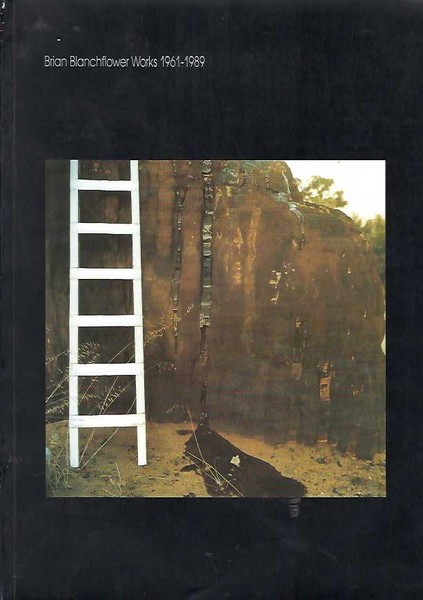Exhibition catalogue This book documents a retrospective of English born Blanchflower’s work. It explores his career ‘from different perspectives in time and space’. It also ‘presents the broadest range possible of his work so as to give the reader an opportunity to form an independent opinion of its value’. This is because Blanchflower tries to represent ‘the place of humanity adrift on the two great seas of space and time’. pp. 143 illusts #1020 (Top of spine cover slightly scuffed)
Brian Blanchflower’s strong affinity with nature – a legacy of his childhood in the downlands of Sussex – is evident in his abstract paintings inspired by the natural environment. As a young artist in England in the 1960s, Blanchflower was impressed by ancient sites and megaliths – a clue perhaps to the artist’s consistent concern with our place in the cosmos. After immigrating to Western Australia in 1972, Blanchflower made frequent trips to the south coast of Western Australia and to the salt-lake region north-east of Perth, which formed the basis for many of his works throughout the 1970s and 1980s. His abstract works took from the Australian landscape not just the colours and textures of the earth and the shimmering night sky but also the parched vastness and sense of infinity associated with nocturnal visions.
Music has also been a source of inspiration for Blanchflower. The works of John Cage, Edgard Varese and Anton Webern in the 1960s, and later Gyorgy Ligeti, Iannis Xenakis and Giacinto Scelsi, as well as classical composers such as Bach and Anton Bruckner, have played an important role in his development as an artist. He has painted several homages to composers, and the British/Australian composer Roger Smalley wrote an homage to Blanchflower (‘Diptych’, 1990–1992).
Since 1974 Blanchflower has held numerous solo exhibitions in Perth and Sydney, and has taken part in group shows in Japan, China, Norway and Australia. In the 1970s and 1980s he was a key member of the pioneering group of artists Praxis, which led to the establishment of the Perth Institute of Contemporary Arts, and from 1972 to 1984 was a lecturer in fine art at the Western Australian Institute of Technology (now Curtin University). His works are held in major collections around the world, including most of Australia’s state galleries.
